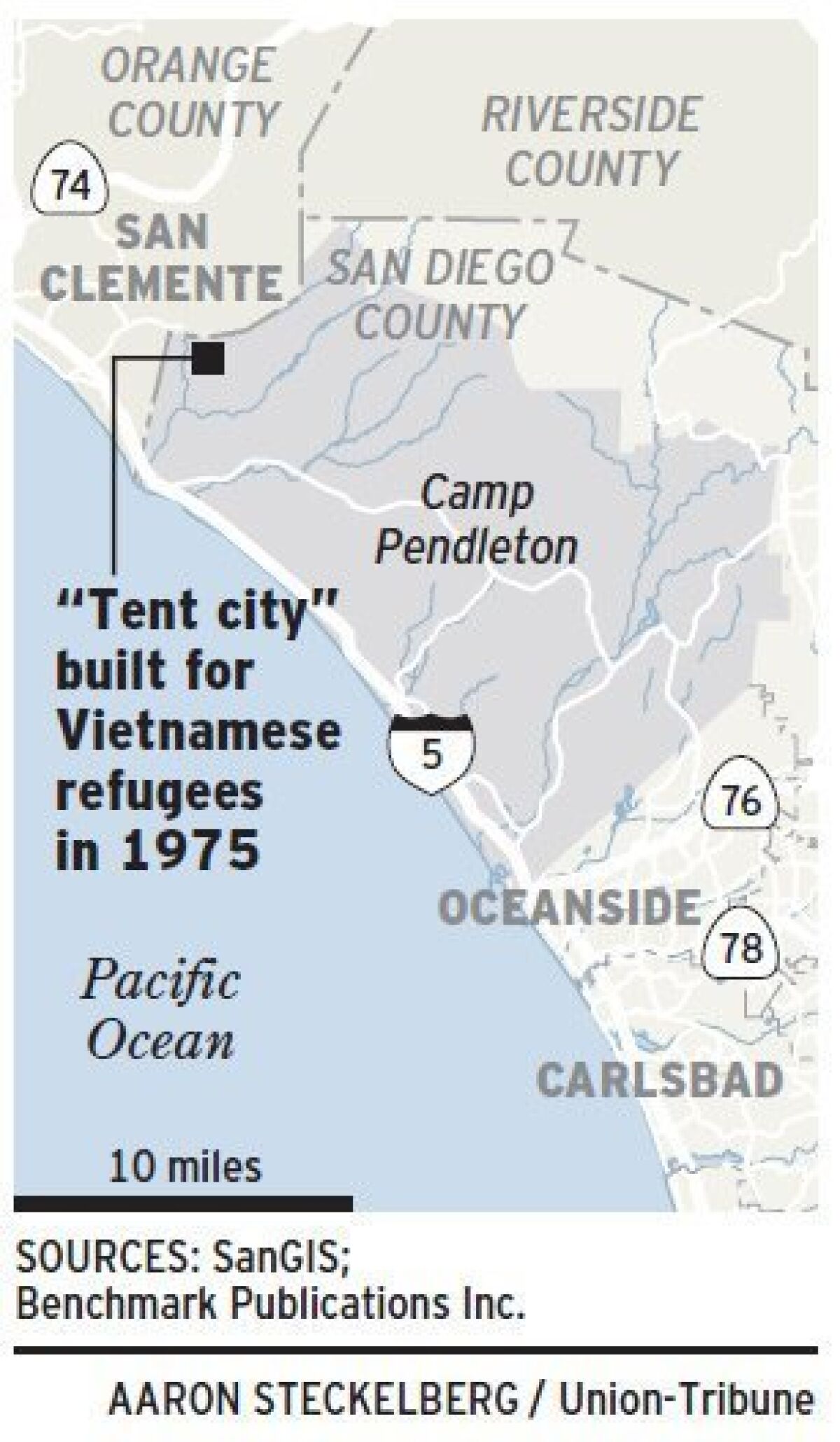Park University Camp Pendleton - 33 ° 12′53.1 ″ N 117 ° 23′15 ″ W / 33.214750 ° N 117.38750 ° W / 33.214750; -117.38750 Coordinates: 33 ° 12′53.1 ″ N 117 ° 23′15 ″ W / 33.214750 ° N 117.38750 ° W / 33.214750; -117.38750
Marine Corps Base Camp Pdleton is the largest West Coast base of the United States Marine Corps and one of the largest Marine Corps bases in the United States. It is located on the coast of Southern California in San Diego County and is bordered by Oceanside to the south, San Clemente and Orange counties to the north, Riverside County to the northeast, and Fallbrook to the east.
Park University Camp Pendleton
The base was established in 1942 to train US Marines for service in World War II. By October 1944, Camp Peddleton was declared a "permanent installation" and by 1946 it had become the home of the 1st Marine Division. It is named after Major Jarl Joseph Harry Peddleton (1860-1942), who long supported the establishment of a Marine Corps training base on the West Coast. Today, many operational force units operate there, including the Marine Expeditionary Force I and various training commands.
Ms. Fallon's Memorial Tuesday, June 8, 2021, Kellogg Park
In 1769, a Spanish expedition led by Captain Gaspar de Portela explored north from Loreto, Baja California Sur, in an attempt to reach Monterey Bay, something Europeans had never done before by land. On July 20 of that year, the expedition reached the area now known as Camp Peddleton, and since it was the feast of Saint Margaret, the land was called Santa Margarita. The mission plans to establish military outposts and Franciscan missions in San Diego and Monterey.
Over the next 30 years, 21 missions were established, the most productive of which was Mission San Luis Rey, south of the former camp at Peddleton.
After 1821, after the Mexican War of Independence from Spain, the governors of Mexico gave large land grants (farms) to some of the former Portola expedition members who remained there (mainly garrison soldiers). Retired soldiers were joined by businessmen, officials and military leaders known as farmers. They and their child, California, became the Alta California Department of Lands.
In 1841, two brothers, Pio Pico and Andres Pico, became the first private owners of Rancho Santa Margarita. Later, more land was added to the grant, and it was called Rancho Santa Margarita y Las Flores, which remained with the ranch until the Marine Corps purchased it in 1942. The ranch's beef brand design appears today on the base's logo.
Park University Commencement Program
In 1863, a Glishman named John (Don Juan) Forster (Pio Pico's brother-in-law) paid off Pico's gambling debts in exchange for a deed to the ranch. During his ownership, he expanded the farmhouse, built in 1827, and developed the ranch into a successful cattle operation.
Forrester's heirs were forced to sell the farm in 1882 due to a series of droughts and the Fce Act, which forced Forrester to build a farm around extensive farmland. It was bought by a wealthy rancher, James Clare Flood, and managed by an Irishman, Richard O'Neill, who was effectively rewarded for his faithful service with half ownership. Under the guidance of O'Neill's son Jerome, the farm was making nearly half a million dollars a year, and the house was modernized and furnished.
The main gate of Camp Peddleton in November 1997. This is the main traffic road to the base. This gate has been open and manned by the military police since November 9, 2012;

In the early 1940s, both the Army and Marines were looking for land for a large training base. The army lost interest in the project, but in February 1942 it was reported that 122,798 dunams (497 km
Kabul Bombing Claims Lives Of 10 Camp Pendleton Troops
) Rancho Santa Margarita y Las Flores will become the largest Marine Corps base in the country.
It was named after Major Jarl Joseph Harry Peddleton, who had long supported the establishment of a training base on the West Coast. Construction began in April as a temporary facility built to minimum wood frame construction standards.
After five months of furious construction activity, Colonel Lemuel C. Shepard Jr. Led the 9th Marines from Camp Elliott in San Diego to Camp Paddleton to be the first troops to occupy the new base. On September 25, 1942, President Franklin D. Roosevelt officially dedicated the base.
Training facilities at the base during the war were the Amphibious Craft School, the Amphibious Tractor School, the Coastal Battalion School, the Amphibious Assault School, and the Naval Construction Battalion Training Center.
M Bh464 1074
And the School of Medical Field Services at Naval Hospital Santa Margarita Farm, now Naval Hospital Camp Peddleton. The facility served as a release base for soldiers returning from Europe and Asia after World War II in 1945.
During the Korean War, $20 million helped build, expand, and modernize existing facilities, including Camp Horno. While Camp Peddleton trained the nation's fighting forces for the Korean and Vietnam wars, some 200,000 Marines passed through the base en route to the Far East.
Since 1954, Camp Pdleton has hosted a variation of basic training orientation for 14- to 17-year-olds. This training, called the Devil's Boys, promotes physical fitness, instills discipline and promotes love of country and the Marine Corps.
In the stables at the camp is a plaque and statue commemorating the horse, a reckless sergeant who served in the Marine Corps in Korea.
Mba Programs For Business Administration
In 1975, Camp Peddleton was the first US military base to provide housing for Operation New Arrivals Vietnamese evacuees. Over 50,000 refugees arrived at the base in the largest humanitarian airlift in history.
Camp Pdleton continued to grow during the transformation, replacing its original tt camps with more than 2,626 buildings and over 500 miles of roads.
Preservation of Camp Peddleton's Marine Corps heritage and history continues. The original farmhouse has been designated both a National Historic Site and Las Flores Adobe.
), conducts year-round training for Marines in addition to all other branches of the US military. Amphibious and sea-to-shore training takes place at several key points along the base's 17-mile (27 km) coastline. The far end is the area of influence. Today's population is about 100,000. Recruits from the nearby Marine Corps Recruit Depot, San Diego, spend four weeks in the Edson area of Peddleton, receiving field training; after completing recruit training, newly enlisted Marines return to base for additional training at the Infantry School .
Las Flores Viewpoint, Interstate 5 Near Camp Pendleton, Ca…
Camp Peddleton remains the last major undeveloped stretch of California coastline south of Santa Barbara, except for a few relatively small state parks. In 2015, the site was proposed for a major civil airport.
Since August 2004, Camp Pdleton is one of five Department of Defense sites operating the Standard Terminal Automation Exchange System (STARS) airborne radar. The STARS radar allows the facility to simulate air traffic for training purposes.
Camp Pdleton's five-man color guard attended many sporting events in San Diego and the 1996 Republican National Convention, accompanying the National Anthem singers. Among the famous performers accompanying the Camp Felton color guard are Frankie Lane, Herb Alpert, Wilson Phillips, Jewel, Trisha Yearwood and the Dixie Chicks, all of whom performed the national anthem at the World Series game, the Super Bowl or, b. The Case of Wilson Phillips Major League Baseball All-Star Game held at SDCCU Stadium.

In a 2002 letter to the United States Department of Defense, Marine Corps Commander J.L. Jones to the Transportation Corridor Authority (TCA), which manages toll roads in Orange County: "Frankly, I'd rather the proposed toll road not be built. At or near Camp Peddleton. This construction is another dent in [our] ability to prepare for war. It also brings further loss of natural areas that support endangered species, thus placing an even greater burden on Camp Pdleton to protect the area's biodiversity.
Victims Of Camp Lejeune Water Contamination Share Their Stories
In 2008, after rejecting the exclusion of the proposed 241 Toll Road to San Onofer State Beach through San Onofer State Beach Park, the TCA filed a permit for construction on the northwest portion of the base in 2008. A spokesman for Camp Peddleton rescinded the request in 2010, saying they could only allow the toll road from San Onofer State Beach Park because their training missions could not be completed without the proposed land. In fact, the California shrew, an endangered species, lives in the northwest part of the base.
In 2013, TCA funded a study to remove the California mosquito from the endangered species list, which would have facilitated negotiations for the construction and design of 241 exit sites through San Onofer State Beach Park.
Camp Pdleton was built on a broad stretch of beach that once supported an estuary and extensive marsh habitat in the mouth of the Santa Margarita River.
The base margin consists of floodplains, oak forests, coastal dunes and cliffs, coastal scrub, chaparral, and several types of wetlands, including ephemeral wetlands such as bib pools.
Camp Pendleton California: In Depth Welcome Center
Investigation
Hotels near camp pendleton, marine corps camp pendleton, harborsite inn camp pendleton, camp pendleton storage unit, cox camp pendleton, camp pendleton storage, marines at camp pendleton, camp pendleton base, camp pendleton self storage, cox internet camp pendleton, camp pendleton vehicle storage, camp pendleton motels

0 Comments